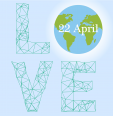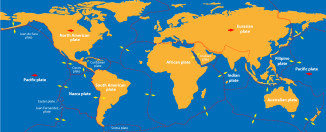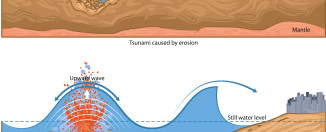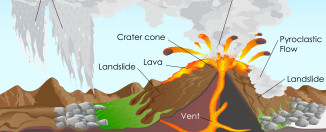Ancient Supercontinents
The upper portion of the earth’s crust and mantle is divided into tectonic plates that are constantly moving around, at rates of a few centimeters each year. That means that over millions of years, some continents have moved thousands of kilometers to arrive at their current positions. Today, the continents are fairly well spread out, with oceans in between them. But in the past there were times when many or all of the continents were jammed together into huge landmasses called supercontinents.
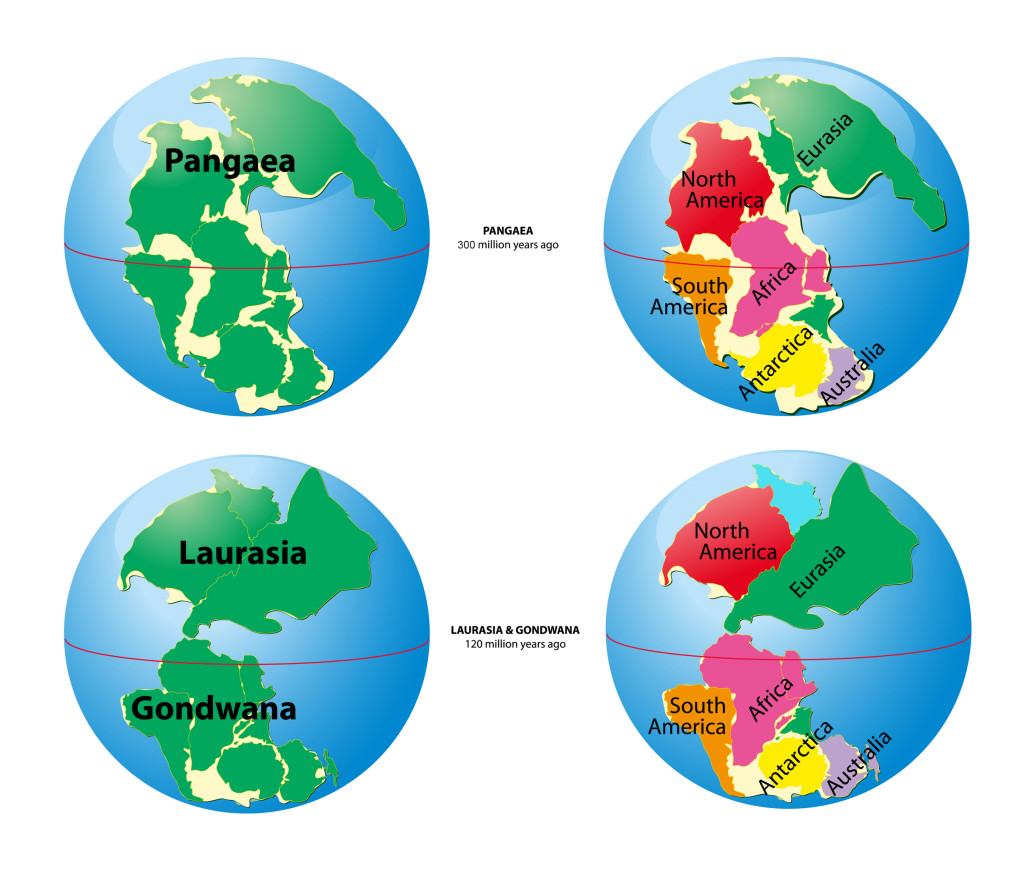
Pangaea – Pangaea was the latest of many super continents in Earth’s history to include all of the continents together into one massive land area. Pangaea formed around 300 million years ago when Gondwana combined with the North America and European plates. It started splitting up 200 million years ago and this process is still going on. Talk about a long break-up!
Gondwana and Laurasia – Pangaea’s break-up slowly created two super continents about 120 million years ago: Gondwana in the south (composed of all the current southern continents) and Laurasia in the north (made up of today’s North America and Eurasia). Gondwana actually formed first then became a part of Pangaea before splitting off again.
WAIT! How do we know these supercontinents existed? No one was around to map them hundreds of millions of years ago. The answer lies in rocks and fossils. There are many places in the world where rocks of the same type and age are found in the exact same layers but on different continents. This suggests that the rocks were formed when the two places were stuck together, and they later broke apart. Fossils of the same kinds of animals and plants of the same age found on different continents can also be proof that they were once stuck together, especially for land animals and plants which couldn’t fly or swim across oceans.
Try to locate the North Star!



